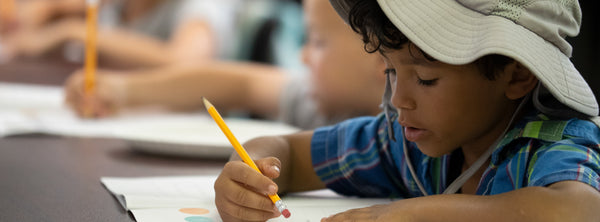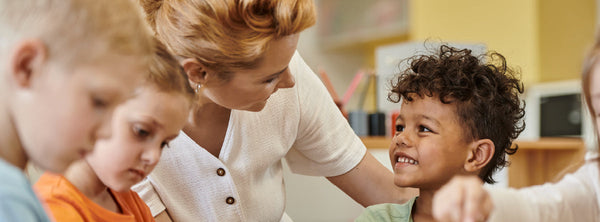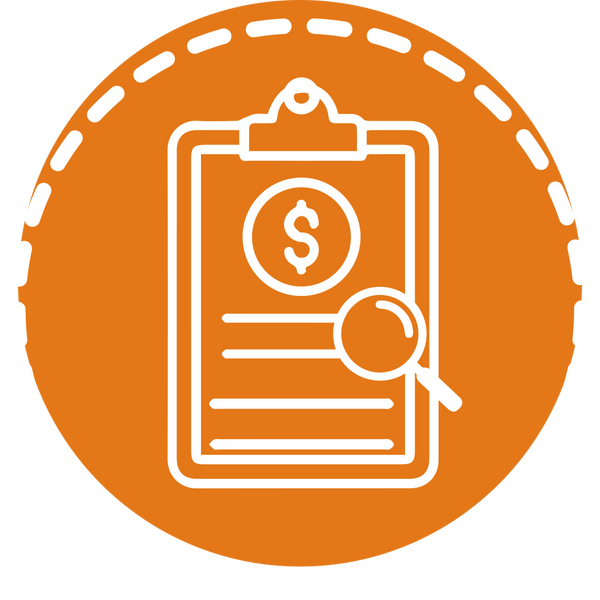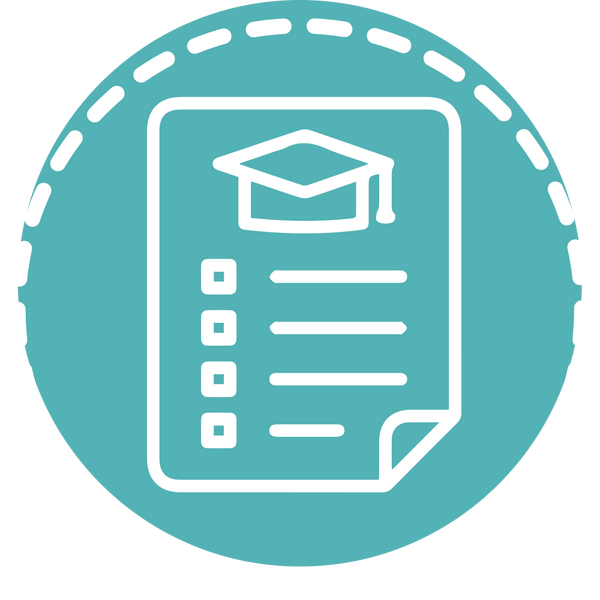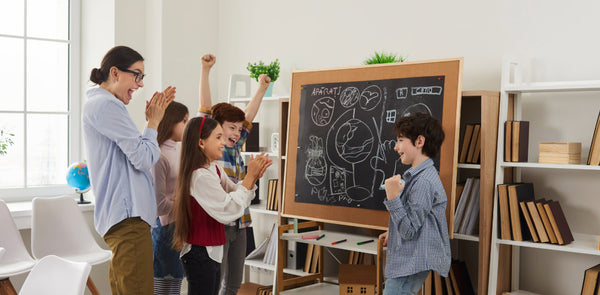
5 Ways STEM Connects to Holistic Learning
"We can never come to know the whole of reality by isolating variables." -Andrew P. Johnson, PhD, Holistic Learning Theory and Holistic Education, 2005
What Is Holistic Learning?
Holistic educators facilitate learning experiences that nurture learners’ minds, bodies and hearts. They aim to develop the whole child by encouraging them to be self-directed, well-rounded learners with diverse skill sets. They strive to create a student-centered, interdisciplinary environment that prepares learners for success in the real world.

STEM educators, does this all sound familiar? There's considerable overlap between STEM and holistic learning.
Both holistic and STEM education aim to create meaningful learning experiences that help learners reach their full academic and personal potential.
Let's explore five ways STEM is aligned with holistic learning.
Each is a small part of a larger goal, resulting in high-quality learning experiences that lead to a better understanding of oneself, others and the world.
Academic Growth
1. Experiential Learning
Walk into any STEM or holistic learning environment and you may find yourself searching for an educator among a sea of engaged learners. That's because the educators are facilitating hands-on learning experiences, often referred to as experiential learning. The power of discovery is in the hands of the learner.
What can educators do to play a more active role as facilitators?
- Implement lessons emphasizing problem-solving and creativity
- Flexible learning opportunities is a great place to start!
- Encourage learners to make mistakes, take chances and self-reflect
- Find teachable moments throughout the process
- Ask questions
- Push learners' thinking
- Provide helpful resources
Engaging learners in community problem-solving activities or developing innovative products is a popular STEM and holistic approach to experiential learning. Learners see concepts and skills in action, which provides them with memorable experiences they can use in the future.
2. Real-World Experiences
It's interesting to note how many skills we use to complete tasks, big or small. A quintessential example is deciding what to do for dinner each night. This simple, albeit sometimes frustrating, task requires quite a few skills.
- Decision-Making: What am I in the mood to eat?
- Literacy: Can I read and decipher this recipe (or take-out menu)?
- Problem-Solving: I don't have this ingredient, but can I replace it with something similar!
- Creativity: How can I make this meal even tastier?
- Math: Are there enough portions for each family member? Will there be enough for leftovers?
We bet you can find even more connections, and that's what STEM and holistic learning are all about – recognizing how different skills are connected and using that understanding to succeed in everyday life. This is the principle of interconnectedness.
How can I bring real-world experiences to my learning environment?
Interconnectedness is the idea that school subjects should be taught simultaneously to mirror how they're applied in the real world. Educators often achieve this by implementing:
- Project-Based Learning: Engaging learners in hands-on projects that require knowledge from various subjects.
- STEM Design Challenges: Posing challenges to learners that integrate science, technology, engineering and math and encourages them to use skills from multiple disciplines to solve real-world problems.
- Inquiry-Based Learning: Encouraging learners to ask questions and explore topics in a way that involves critical thinking and integrating knowledge from different subject areas.
- Integrated Learning: Collaborating with educators from different disciplines to plan cohesive lessons incorporating content from various subjects and reinforcing connections.
These approaches enhance interconnectedness in any learning environment, providing learners with a more comprehensive and practical understanding of how subjects interrelate in the world beyond the classroom.
Don’t forget transferable skills too! Read all about Nurturing the Entrepreneurial Spirit with STEAM for tips on how to integrate key practical skills learners can use throughout their personal and professional lives.
Emotional Growth
3. Developing Confidence and a Sense of Self
When learners develop stronger self-confidence, they’re more likely to challenge themselves and ultimately achieve success. Carefully crafted STEM lessons provide ample opportunities for learners to work on their social-emotional skills (SEL).
One way holistic educators address these skills is by creating a student-centered learning environment. This educational philosophy emphasizes learners’ individual needs, interests and unique learning styles.
Trust plays a key role in the success of a student-centered learning approach. Educators show their trust when they allow learners to make meaningful choices that shape the learning experience. As a result, learners feel valued and respected in a safe and supportive learning environment. This boosts their self-confidence and self-esteem.
How can I involve my learners in shaping their learning experiences?
PCS Edventures offers several programs that champion learners’ unique voices and invite them to explore their ideas, talents and interests.
Social Growth
4. Collaborative Experiences
Just as concepts are better taught together, learners benefit from working together. Group activities offer opportunities to practice communication and problem-solving skills, but that’s just the start. Holistic and STEM educators emphasize the importance of collaborative learning by encouraging learners to build strong relationships in and out of the academic setting.
Peer-to-Peer Relationships
After grouping learners using one of these five Student Grouping Strategies to Maximize Engagement, get them excited about solving a STEM design challenge. These hands-on activities foster a collaborative atmosphere, where learners can share ideas and learn from each other.

Download our Fractured Folktale: Paul Bunyan FREEBIE for a STEM design challenge that’s enormous fun for everyone!
Learner-Educator Relationships
As you hop from group to group facilitating the learning process, you’ll want to build a strong relationship with each learner. This NoteWorthy Anecdotal Records Kit is a great way to gather and organize information about learners’ interests, motivations, learning goals and more. When educators take the time to get to know their learners, they are more likely to build relationships with them.
Once a strong relationship is established, encourage learners to ask questions, seek clarification and express their thoughts with you. Similarly, provide constructive feedback to guide their learning journey.
Relationship with the Community
Think outside the confines of your learning environment and implement projects that address community issues or needs. This gives learners a chance to apply STEM skills in a practical way and to gain a sense of social responsibility.
Reach out to community members too. You may find many families, council members or local organizations willing to support your program endeavors.
5. Empower Learners to Develop Their Values
Both holistic education and STEM are empowering learners to follow their interests, build strong relationships and develop self-confidence within experiential learning environments. Now what?
The result is a community of learners who, armed with their unique perspectives and values, can make a positive and lasting impact on the world.
That’s a great thing! Society needs inquisitive thinkers with the skills to make impactful changes. The more learners engage in hands-on experiences, the more they begin to question the world around them. Educators cultivate tomorrow's thinkers by Empowering Learners with STEM.
Interactive STEM Learning for All
PCS Edventures’ programs strive to provide for the whole learner, preparing them for success with hands-on experiences. Our step-by-step educator guides make it easy for anyone to teach comprehensive, engaging instruction. Request our free curriculum samples to see for yourself!
How do you think we can best nurture an entrepreneurial mindset among STEM learners?
Share your ideas in the comments and stay connected with us on social media for more valuable resources.

Author: Jessica Ventre
An experienced elementary educator and science instructional coach, Jessica’s passion for STEM instruction and student-led learning is always at the forefront of her lessons and professional development workshops.





